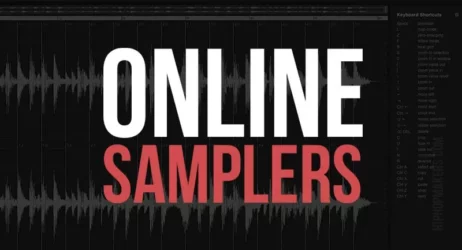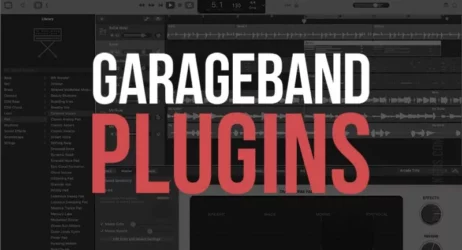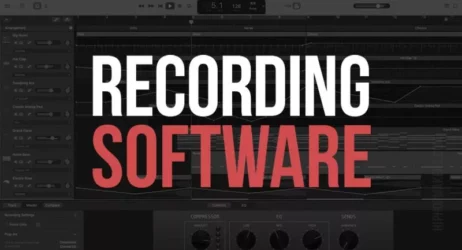This guide will answer what is a scale in music. Learn about music scales, the different types of scales, and review examples for reference.
What Is A Scale In Music?
A scale is a set of musical notes compiled in the order of frequency or pitch. This scale is ordered based on the ascending scale by increasing the pitch, and then the descending scale is achieved by decreasing the pitch.
- What Is A Scale in Music
- What is the Use of Scales in Music
- How Many Scales Are There
- How Do You Count a Scales
- What is a Musical Scale Example
- What Are The 12 Scales in Music
- How Do You Learn Scales

What is a Scale in Music?
In musical theory, a scale is the set of musical notes compiled and ordered by the fundamental frequency, often referred to as the pitch. This scale is composed or set up in both an ascending and a descending scale. Overall, a musical scale is a group of notes that are arranged in ascending or descending order.
Usually, in the standard practice period in music, a significant chunk of the melody of compiling and producing a musical work is done in the manner of using a single scale, which can be represented on a tool called the ‘staff’ and has a standardized essential signature look to it.
As a result of the octave equivalence in music theory and producing music, the scales are considered to last a single octave. Then the higher and lower octaves create a repeating loop.
A musical scale also represents an interval between two notes that are released from the scale. We can note that it is not essential for there to be any equality within the steps on any scale.
This is also further highlighted by microtonal music, which implies that there are no barriers to the number of notes generated in a music interval.
There is a method of the breadth of each scale to classify them into different categories. A pivotal example to highlight this would be the chromatic scale step that represents the semitone interval.
In contrast, a grander scale is successfully conducted by the pattern of W-W-H-W-W-H – in this calculation, the W refers to the whole step that is taken, and the H refers to the half step.
According to the intervals devised here, there are four main categories:
- Chromatic
- Major
- Minor Scale
- Diatonic
These categories are the four main ones that one may look into. Otherwise, in total, it is noted that there are up to 12 categories.
The scale is defined by the characteristics associated with its interval pattern and the detailed note, known as the tonic. The tonic of the scale is the note that is selected in the prime of the octave.
What is the Use of Scales in Music?
You might wonder what precisely the use of scales is, and let me tell you that it is a vital aspect for musicians who practice it.
Musicians use scales to learn how to execute a pattern of notes in the most straightforward way possible.
This also allows musicians and musical theorists to build up their finger dexterity or the efficiency required while working with their hands and punching in different combinations to produce tunes and music.
Musicians also do scales, and they should because it also helps them build excellent muscle memory. The use of scales in music is related mainly to the musician and effortlessly generating music as they practice scales, and scales are also the base upon which chords will be built.
How Many Scales Are There?
The world of scales is dense, complex, and vastly spread across music theory. There are two types of scales to keep it short and minimal: the major scales and the combination of major and minor scales, and lastly, the three natural minor scales. There are 48 musical scales in total combined.
First, it’s the major and minor scales. Then comes the 12 major scales and the three minor scales that include a natural, harmonic, and melodic scale.
These may sound like a lot – but the most utilized ones are pretty limited if you think about it. In music theory, many scales are still being discovered and pitched. Once again, all of these scales are different and in their divided categories.
How Do You Count a Scales?
Scales are not equations but derived from frequency which is why they can be measured and calculated. Some methods and formulas are present to count the scale perfectly, which can also differ with the particular musical instrument used. For instance, it will be slightly different on a Piano and different on a Violin.
The most basic way of counting the scales is first to understand the names of the scale degrees, such as the C major scale in the Piano.
This scale is considered a fundamental step, especially in piano music theory, and it is crucial to master it before leaping to another. Don’t fret – it’s straightforward to work with and learn as well.
This scale is spelled as the C-D-E-F-G-A-B-C, and each of the parts on this pattern has its characteristics.
Such as the C being the first degree or the tonic and then the F being the fourth degree, and the subdominant scale.
What is a Musical Scale Example?
Most of you might have heard the tune do, re, mi, fa, sol, la, ti, do… and so on. This is a prime example of what a musical scale is, and to produce this tune or sound, the perfect composition of scales needs to be put forward.
The sequence and the interval required starting from the first do and coming back to the same do the simplest method of explaining the fundamental science behind music scales. If one ever wants to test, try producing a scale through hands-on experience with an instrument – learning how to master that will be creating the hierarchy.
What Are The 12 Scales in Music?
Remember the 12 scales? It is notably one large scale referred to as the chromatic scale, which then has 12 pitches used to create tonal music.
The interval caused by a semitone separates the notes in this scale. Western music instruments use this scale, such as the Piano (yes, the Piano is a western music instrument). All other western music instruments are made to produce the chromatic scale in question.
In contrast, all other scales can produce continual pitch, including instruments such as the violin, which can also generate microtones that are the notes in between. The chromatic scale is essential for Western music theory, although rarely found in musical compositions.
How Do You Learn Scales?
Learning scales can seem scary to some, but do not be afraid. It is far more straightforward than you think.
The best thing about music is that it comes to you naturally once you begin practicing. So the first step would be to move just with the tonics and then practice with proper consolidation and under the guidance of a mentor.
Summary of Scales
A scale is a pattern or sequence of pitches that can be played over and over again. It could be an octave up from your current pitch, or it could be two whole steps above your current pitch. The most common type of scale used by musicians is the diatonic scale because it uses only seven tones.
I hope we have answered what a scale is in music, and you now have a good understanding of scales.
If we missed anything, please share it in the comments.





